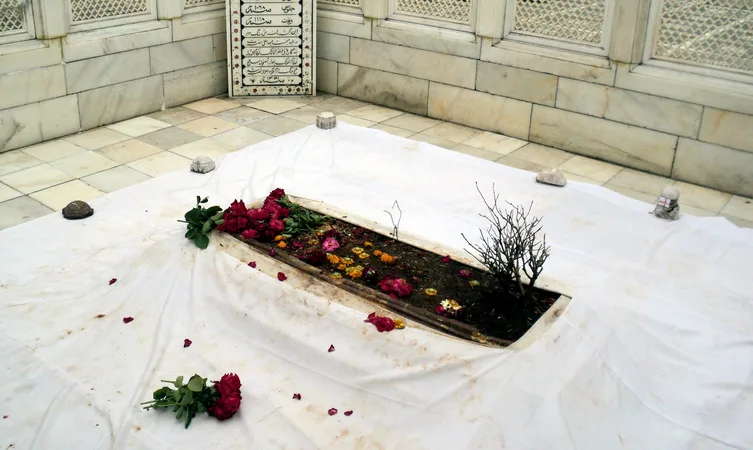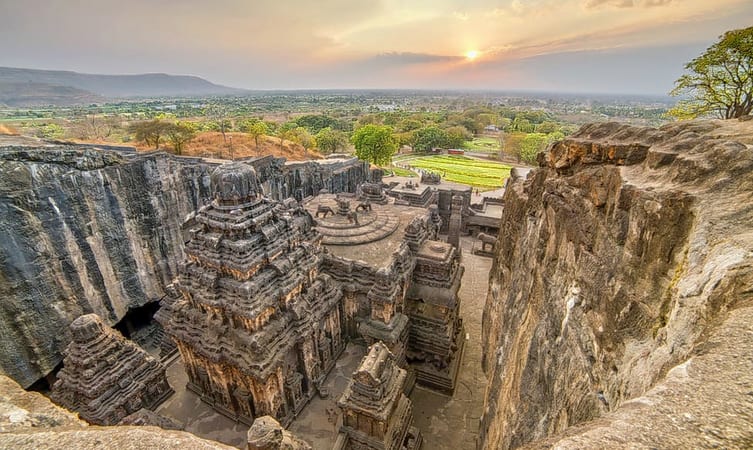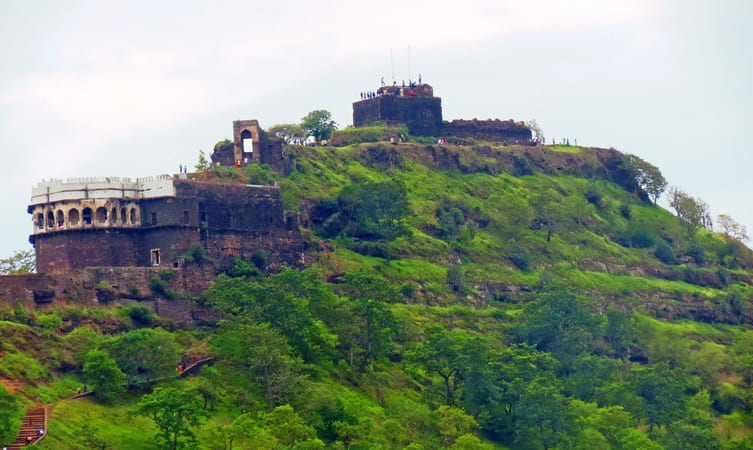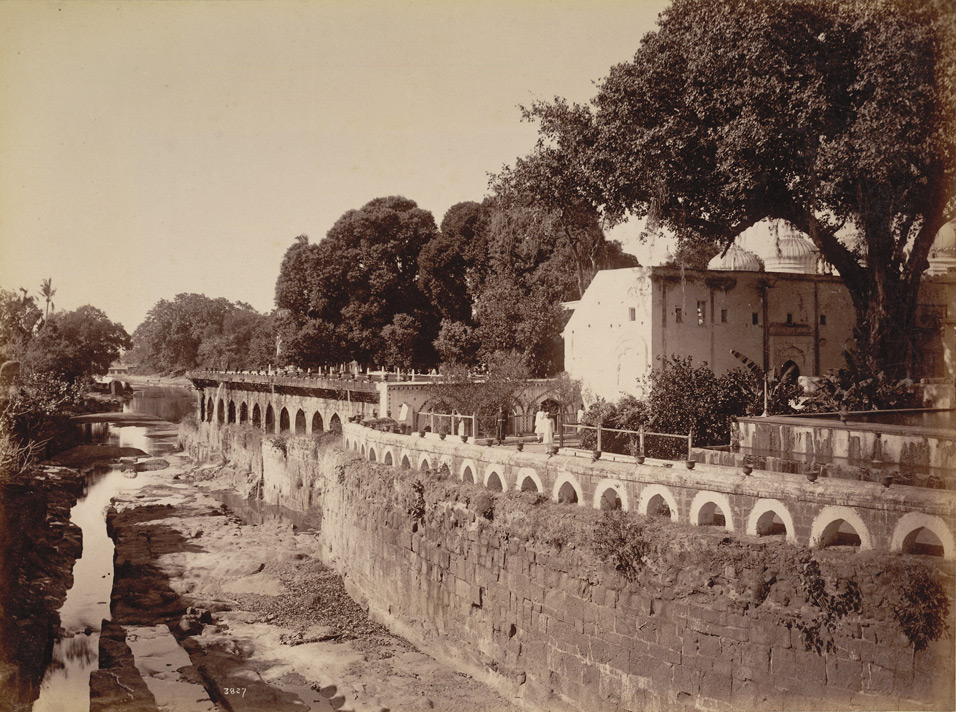No one could possibly have imagined that the six and last Mughal emperor,
Aurangzeb, would lie close to his enemy, Abul Hasan Tana Shah in their
eternal sleep at Khuldabad, which lies half-way between Ellora and
Aurangabad in southwestern India.

What is worse, Aurangzeb was not a believer in the Sufi saints and their
silsilas. Yet he lies buried in a mosque near that of a Sufi preacher
popularly known as Zerzeri Zer-Bakhsh. Aurangzeb had decreed the
haninging of Sufi Sarmad, the majzoob, the one drunk on the love of the
Eternal One.
The emperor was a believer in the more ascetic Islam, the
simple kind preached and upheld by Ibn Taymiah of Damascus
Aurangazeb had no use for the complexity, the pluralist and humanist ideas
derived from the Hindu epics by the likes of Nizamuddin Awliya of Delhi,
Saleemuddin Chishti of Ajmer, and Junaid the long-haired one (Gesu
Daraaz) of Gulberga. These holy men — and Islamized, incorporated into
the spirit of Islam, the way Islamic thinkers had always done, down to Iqbal
who had the distinction of Islamizing Nietzche’s concept of superman or
ubermensch in the form of “the Momin” or the “mard-e momin.” The
Punjabi man’s idealism was suspiciously Brahmanic in its outline and
power structure. Which should be no surprise because Iqbal was only one
generation removed from his Kashmiri Pundit lineage.
My encounter with history in Aurangabad happened in the summer of 1995,
when, after a few days spent with the family of my wife, Nayeem, in
Hyderabad, I got on a bus alone to travel to Aurangabad. I found a place to
stay at a hotel called Nasheman, the nest in Urdu. Its owner was a Muslim
and so was its staff. The room had the basic necessities, a tiled floor, an
attached bathroom with a shower and nothing luxurious. No room service,
either. To have a meal, I had to walk a mile to a restaurant that also served
liquor. It was managed by a Muslim young man, about 35, and his brother,
about 30. The younger man had just come back from Kuwait after Iraq
invaded that little country; the guy was hoping to get some of his back pay
which was to be distributed under supervision by the U.N. I asked the
waiter if the meat was halaal, and he assured me it was, regardless of the
fact that he had just opened a bottle of beer for the man sitting at the next
table. The mughlai food was just fine.
I hired an autorickshaw to drive me around as far as Ellora and back. The
driver was named Ahmed, about 35; he was barely literate but shrewd
enough to refuse to go to one of the Persian Gulf sheikhdoms where he
would manage to make no more than Rs. 3,000, which he was making as a
scooter-rickshaw driver anyhow, and getting to sleep with wife whenever he
wanted, something the Gulf workers couldn’t do.

We puttered our way to Ellora, and had lunch at a roadside restaurant. I
bought a few postcards some Muslim boys were selling. Some of these
postcards displayed sculpture from Khajurajhu and Konark displaying
couples in the sexual act. The women always broadbased and busty, with a
slim a waste. What did these boys know of such fantasies! All they cared
was about the few damn rupees they made by selling the damn postcards.
These boys also sold copper coins that they said were there to be picked
up after heavy rains in the fields and in the ruins of mud houses. I bought a
few, and later found somebody who sold me silver coins bearing the imprint
of Emperor Aurangzeb. Some of the copper coins dated from the 14th
century Tughlaq times, and it makes sense because the nearby fort town of
Daulatabad was where Muhammed Tughlaq had moved his capital from
Delhi. Nizamuddin Awliya’s mureed, or disciple, named Hasan Sijzi is
buried in the area. He was the one who wrote Fua’id-ul Fawood, a
collection of sayings of the Sufi master jotted down by Sijzi. These sayings
are actually stories about miracles performed by such luminaries as Farid
Ganjshakar and Bakhtiyar Kaki.

The Daulatabad fort, built on a mountaintop and thus impregnable, is in a
surprisingly fine shape, unlike the one at Golconda, which, of course, was
besieged for six months and bombarded to heaps of rock by Aurangzeb’s
invading forces.
Next stop was Panchakki, the water mill that operated on the same
hydraulic principles used by ancient Persians to build what was called the
Qanaat system of underground water canals that brought water from the
mountains and supplied folks in surrounding towns or villages.
http://en.wikipedia.org/wiki/Traditional_water_sources_of_Persian_antiquity
, the same kind of canal system, called falaj, operated in Oman and other
arid countries of the Gulf, brought to them, again, by the ancient Persians.
In Aurangabad, the water mill was used to grind flour, too. It was built in
1695 on orders from AsafJah the first Nizam of Hyderabad.

The Wikipedia article http://en.wikipedia.org/wiki/Panchakki offers nice pictures and
generally good history, but does not mention the ancient Persian origins of
the water mill.

